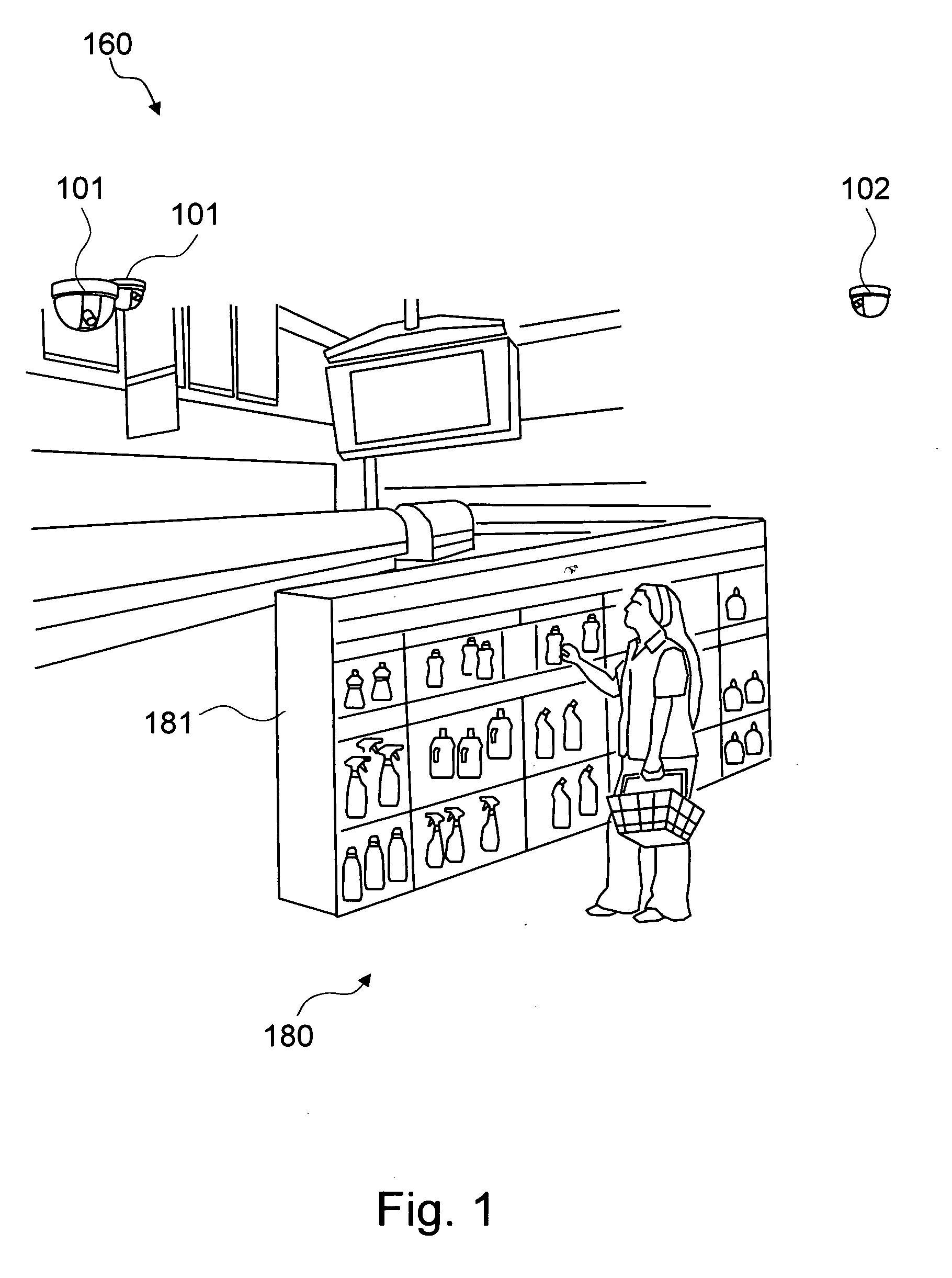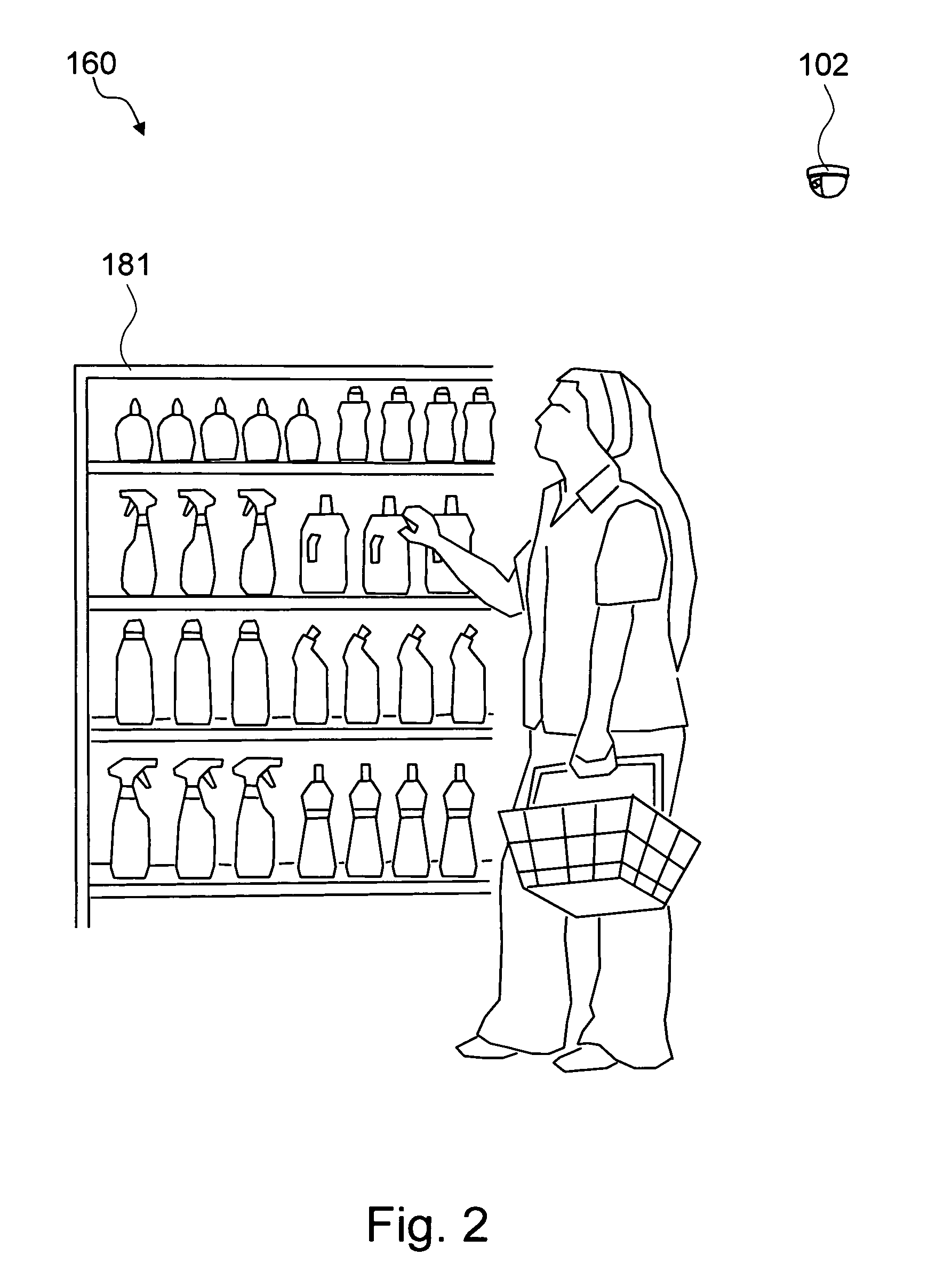Method and system for automatically analyzing categories in a physical space based on the visual characterization of people
a technology of automatic analysis and physical space, applied in the field of automatic analysis of categories in a physical space based on the visual characterization of people, can solve the problems of human errors, inefficiency of manual input by a human operator/user, and inability to efficiently track all shoppers in such cases, so as to minimize shelf space and the number of products stocked
- Summary
- Abstract
- Description
- Claims
- Application Information
AI Technical Summary
Benefits of technology
Problems solved by technology
Method used
Image
Examples
Embodiment Construction
[0087]FIG. 1 is an overall view of an exemplary embodiment of the invention, where the present invention measures and analyzes the interaction of a plurality of persons with sub-categories of a category 160 in a physical space, using a plurality of first means for capturing images 101 and a plurality of second means for capturing images 102.
[0088]The physical space may be a retail space, and the persons may be customers in the retail space in the description of the invention. However, although the disclosed method may be described in the context of a retail space, the present invention can be applied to any physical space that has a restricted boundary, and the application area of the present invention is not limited to the retail space.
[0089]The term “category” is defined as a logical entity for a group of products, a group of product types, space, areas in a store, display of a group of products, or department with similar relevance in the present invention. The term “sub-category...
PUM
 Login to View More
Login to View More Abstract
Description
Claims
Application Information
 Login to View More
Login to View More - R&D
- Intellectual Property
- Life Sciences
- Materials
- Tech Scout
- Unparalleled Data Quality
- Higher Quality Content
- 60% Fewer Hallucinations
Browse by: Latest US Patents, China's latest patents, Technical Efficacy Thesaurus, Application Domain, Technology Topic, Popular Technical Reports.
© 2025 PatSnap. All rights reserved.Legal|Privacy policy|Modern Slavery Act Transparency Statement|Sitemap|About US| Contact US: help@patsnap.com



